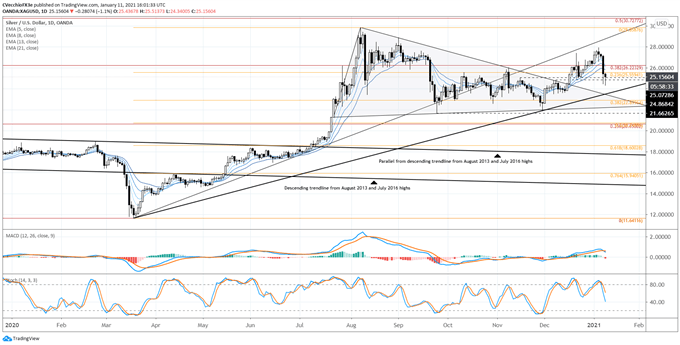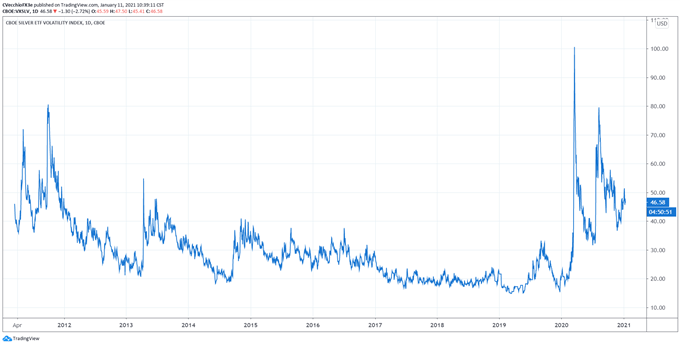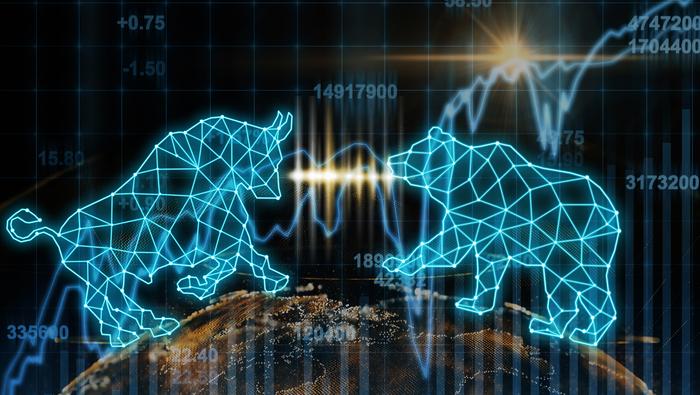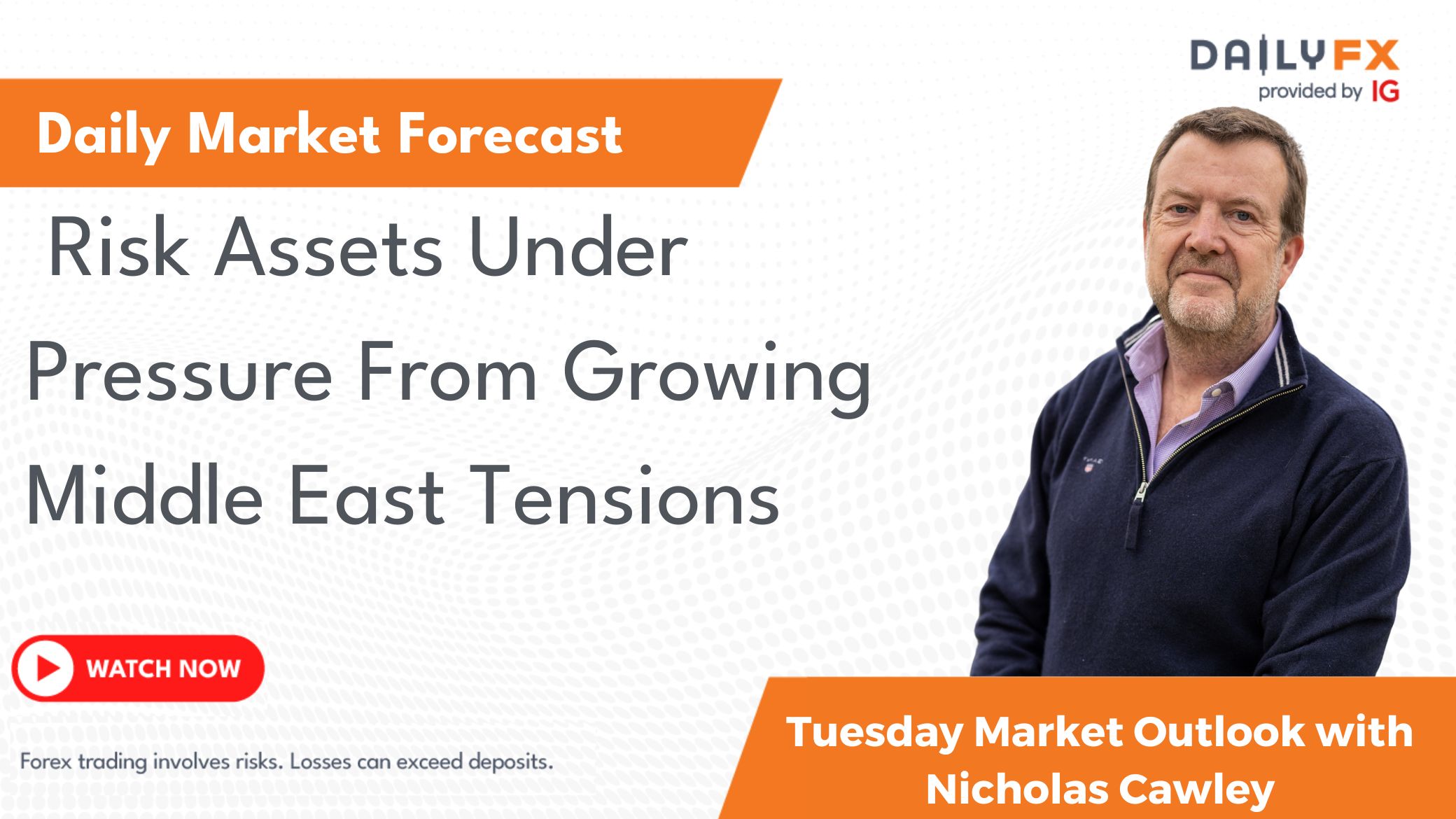Silver Price Forecast Overview:
- Silver volatility has gone up in recent days, but silver prices have come down. That’s not a good sign, as silver price and silver volatility typically enjoy a positive correlation.
- Nevertheless, long-term technical studies still suggest that a bottoming process is underway, and even a near-term pullback in silver prices has not and may still not disrupt the narrative.
- Recent changes in sentiment suggest that silver prices have a mixed outlook in the short-term.
Silver Prices Suffer
Silver prices had a rough start to 2021, initially trading higher prior to plunging over -3.5%. The surging coronavirus pandemic has put the jilted US economy back into a state of lockdown, which in the spring 2020 proved detrimental to silver’s fundamental foundations. But now, even amid the prospect for more US fiscal stimulus, a spike in US Treasury yields without a concurrent rise in inflation expectations has actually boosted US real yields, undermining a key tenet of the silver price bullish narrative in 2020 and 2021.
Silver’s Longer-term Fundamentals Remain Solid
Longer-term, rising government deficits and prolonged low interest rates are an environment like what transpired in the 2009 to 2011 period. With the global economy is looking ahead to a period of significant growth post-pandemic, silver prices have a recent historical precedent to suggest that they will benefit over the coming months, if not longer. Long-term technical studies still suggest that a bottoming process is underway, and even a near-term pullback in silver prices has not and may still not disrupt the narrative.



SILVER PRICE TECHNICAL ANALYSIS: DAILY CHART (January 2020 TO January 2021) (CHART 1)

Silver prices have once again dropped below the 23.62% Fibonacci retracements of the 2020 low/high range at 25.5594, where previous rallies failed (most recently in October and November 2020).
Silver prices are below their daily 5-EMA, which while remaining in bullish sequential order, is souring quickly. Daily Slow Stochastics are quickly racing lower towards their signal line, daily MACD is now trending lower, still above its signal line. It is thus the case that, in the near-term, a deeper pullback can’t be ruled out, but won’t draw into question the potential bullish breakout attempt unless the July-December triangle is reentered.
SILVER PRICE TECHNICAL ANALYSIS: WEEKLY CHART (November 2010 TO January 2021) (CHART 2)

Our long-term bullish view on silver prices remains. “The recent triangle consolidation is occurring in context of the breakout from the downtrend dating back to the August 2013 and July 2016 highs, suggesting that a long-term bottoming effort is still under way. If the silver price triangle were to breakout to the topside, there would be good reason to suspect that the move had meaningful technical tailwinds pushing prices higher.” The near-term bullish breakout in silver prices may be in question, but the longer-term technical structure remains clear from this strategist’s perspective.



Silver Prices and Volatility Lose Touch
Both gold and silver are precious metals that typically enjoy a safe haven appeal during times of uncertainty in financial markets. While other asset classes don’t like increased volatility (signaling greater uncertainty around cash flows, dividends, coupon payments, etc.), precious metals tend to benefit from periods of higher volatility as uncertainty increases silver’s safe haven appeal. But with the latest surge of volatility arriving on the back of discouraging US economic news and stunted hopes for a robust US fiscal spending plan once President-elect Joe Biden takes office, silver prices and silver volatility have lost touch in recent days.
VXSLV (SILVER VOLATILITY) TECHNICAL ANALYSIS: DAILY PRICE CHART (MARCH 2011 TO January 2021) (CHART 3)

Silver volatility (as measured by the Cboe’s gold volatility ETF, VXSLV, which tracks the 1-month implied volatility of silver as derived from the SLV option chain) was trading at 46.58 at the time this report was written. The 5-day correlation between VXSLV and silver prices is +0.45 and the 20-day correlation is +0.85. One week ago, on January 4, the 5-day correlation was +0.95 and the 20-day correlation was +0.96.
IG Client Sentiment Index: Silver Price Forecast (January 11, 2021) (Chart 4)

Silver: Retail trader data shows 92.44% of traders are net-long with the ratio of traders long to short at 12.22 to 1. The number of traders net-long is 0.95% higher than yesterday and 1.50% lower from last week, while the number of traders net-short is 22.00% higher than yesterday and 31.72% lower from last week.
We typically take a contrarian view to crowd sentiment, and the fact traders are net-long suggests Silver prices may continue to fall.
Positioning is less net-long than yesterday but more net-long from last week. The combination of current sentiment and recent changes gives us a further mixed Silver trading bias.
--- Written by Christopher Vecchio, CFA, Senior Currency Strategist






